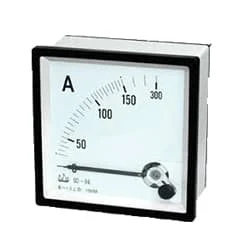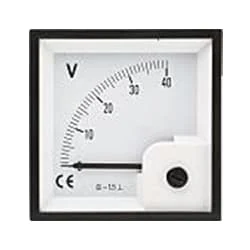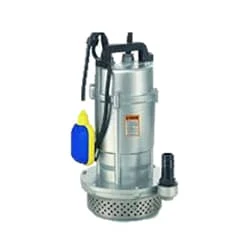Single Phase Submersible Motor Starter Power Wiring | single-phase motor wiring
Single Phase Submersible Motor Starter Power Wiring:
This Diagram Shows When aSingle-Phase AC Supply is Given to the Stator Winding of a Single-Phase Motor, it Produces Alternating flux i.e. Which Alternates Along one Space axis Only. It is not Synchronously Revolving (or Rotating) flux, thus it Cannot Produce any Rotation. Hence Single-phase Induction Motor is not self-Starting.
Diagram of Single Phase Submersible Motor wiring:
 |
| Fig 1: Single Phase Submersible Motor Wiring |
Components Need for this Project:
You can get the components from any of the sites below:
- Ampere meter [See Buy Click Amazon]
- Voltmeter [See Buy Click Amazon]
- Starting Capacitor [See Buy Click Amazon]
- Running Capacitor [See Buy Click Amazon]
- Wire Connector [See Buy Click Amazon]
- On off Switch [See Buy Click Amazon]
- Start Push Switch [See Buy Click Amazon]
- Signal Light [See Buy Click Amazon]
- Submersible Pump [See Buy Click Amazon]
*Please note: These are affiliate links. I may make a commission if you buy the components through these links. I would appreciate your support in this way!
$ads={1}Read Also:
Components used to make the Single Phase Submersible Motor Wiring:
01. Ampere meter
 |
| Fig 2: Ampere meter |
The Ammeter (Abbreviation of Ampere Meter) is a Measuring Instrument used to find the Strength of the Current Flowing Around an Electrical Circuit when Connected in Series with the part of the Circuit Being Measured. For Direct Measurement, The Ammeter is Connected in Series With the Circuit in Which The Current is to be Measured. An Ammeter’s Current Sensitivity is Determined by the Amount of Electric Current Required by the coil of the Meter to Produce the Required FSD Movement of the Pointer.
02. Voltmeter
 |
| Fig 3: Voltmeter |
An instrument that measures the potential difference between any two points in a circuit directly in volts is called a voltmeter. To Measure the Potential Difference Between two Points in the Circuit, the Voltmeter Should be Connected in Parallel with those two points. The working common volt meter and ammeter are similar and work on the same principle. Current flows through the coil of the voltmeter at a rate proportional to the voltage and the reading are obtained. The internal resistance of this meter is very high. The coil of a volt meter is made up of many strands of thin wire.
03. Starting Capacitor
 |
| Fig 4: Starting Capacitor |
The purpose of the starting capacitor is to provide sufficient torque to start the motor and disconnect from the circuit after the motor reaches a predetermined speed. When voltage is applied to the motor without the start capacitor, the motor will make a humming sound. A start capacitor's capacitance range is between 70 and 120 microfarads. The Start Capacitor Increases The Motor Starting Torque and Allows The Motor to Cycle and run Faster. The Start Capacitor is Designed in Such a Way That it is Used for a Short Time. They cannot stay strong for long.
04. Running Capacitor
 |
| Fig 5: Running Capacitor |
A Run Capacitor is Used in Single-Phase Motors to Maintain a Running Torque on an Auxiliary Coil While The Motor is Toaded. These Capacitors Are Considered Continuous Duty While The Motor is Powered And Will Remain in The Circuit While The Starts Capacitor Drops out. The Run Capacitor, Also Sometimes Called an “A/C Capacitor,” Uses Its Stored Energy to Turn or Run The fan Motor. Without The Run Capacitor, The Fan Cannot Turn. Run Capacitors Are Also Rated by Voltage Classification. The Voltage Classifications are 370V and 440V.
05. Wire Connector
 |
| Fig 6: Wire Connector |
A Terminal Block Consists of Modular Housing With An Insulated Body That Secures Two Or More Wires Together. Terminal Blocks—Also Referred to as terminal Connectors, Connection Terminals, or Screw Terminals—are Used in a Wide Array of Applications Where Electrical Systems Need to be Safely Connected. Electrical Terminals are a Class of Electrical Connectors That are Used to Transfer Electrical Current From a Power or Grounding Source to use. Terminals "Terminate" by Crimping or Soldering to Wire or Cable.
06. On off Switch
 |
| Fig 7: On off Switch |
Rocker Switches House a Button For The Operation That can be Pressed on Either end Like a Seesaw to Connect or Disconnect an Electrical Circuit. They are often used as ON/OFF Switches on the Main Power Supplies for Electronic Devices. A Rocker Switch is a type of Switch that Rocks back and Forth, an Action Where one end is Raised and the Other is Depressed. One side of the Switch is on and the other is off; most Common Household Switches are Rocker Switches.
07. Start Push Switch
 |
| Fig 8: Start Push Switch |
The operator switch has its contact in Normally Open condition. To make Ladder Logic you need to understand NO contact. A Classic Switch has one Input And one Output. In "No Switch," YoungBoy Raps About Ammunition, Murder, Firearms, and Firearm Attachments Such as a Switch. The contact of the switch whose contact is already open is NO. That is enough to understand. no switch in a circuit, then the circuit will not function as intended. to write a program such that when the red light is on, This switch is now in normally open condition. When you push the switch it will close and the red light will turn on.
08. Signal Light
 |
| Fig 9: Signal Light |
An electric current Flow Indicator Senses The electrical Current Through an electrical device And produces visible feedback to Indicate Proper Operation. The Current Flow Indicator Has Voltage And Current Regulation Craving First And Second Inputs Connected To The First And Second Conductors, Respectively. This Publication Provides updated Statistics on a Comprehensive Set of social, Economic, Financial, and Environmental Measures as Well as Select Indicators for Sustainable Development Goals.
09. Submersible Pump
 |
| Fid 10: Submersible Pump |
All kinds of Submersible Pump Suppliers, and Full Global Submersible Pump Technology Support. Well-known submersible Pump manufacturer, global submersible Pump technology support. Sewage Pump. Screw Pump. Water Pump. Fire Pump. Styles: water pump, centrifugal pump, fire pump, sewage pump.All kinds of Submersible pump suppliers, and full global submersible Pump technology support. global submersible Pump technology support, Well-known submersible Pump manufacturer.
Thank You for visiting the website. Keep visiting for more Updates
$ads={2}
Frequently Asked Questions
What is a single-phase motor starter switch?
Single Phase Motor Starter is a device for switching and protecting of appliances such as room air-conditioners, refrigerators, washing machines, computers, water coolers, pumps, etc. up to 25 Amperes. In case of any overload, Single Phase the Motor Starter trips, thereby protecting the appliance from mani and burn-out.
How do you hook up a starter to a single-phase motor?
First, we need to connect the DP MCB with the power supply source, then connect the RCCB with the DP MCB, then connect the contact with the circuit diagram, then connect the NO switch, flowmeter, and motor with the single-phase motor.
Is a starter required for the single-phase motor?
Single-phase induction motors are not self-starting without an auxiliary stator winding driven by an out-of-phase current flow of nearly 90°. Once started the auxiliary winding is optional. The auxiliary winding of the permanent split capacitor motor has a capacitor in series with it during starting and running.
What are the basics of motor starters?
So essentially the motor starter is an electrically operated switching device. They were primarily made up of just a few components. The first is a contactor, the second is an overload, and they are commonly used with some sort of circuit diagram protection. So contractors provide the current flow to our motor.
What is the use of a single-phase starter?
For example, if you require the switch for a smaller appliance that uses lesser HP (horsepower) then the single-phase motor starter switch would fit right. You could use this motor to run centrifugal pumps, vacuum cleaners, fans, washing machines, air conditioners, etc.











Post a Comment
Do leave your comments